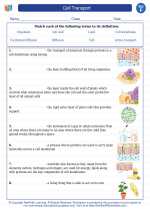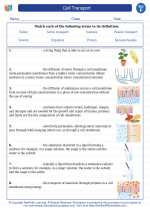Tectonic Activity
Tectonic activity refers to the movement and interaction of the Earth's tectonic plates. This process is responsible for the formation of mountains, earthquakes, and volcanic activity.
Tectonic Plates
The Earth's lithosphere is divided into several large and small tectonic plates that float on the semi-fluid asthenosphere beneath them. These plates are constantly moving, driven by the heat and convection currents in the mantle.
Types of Tectonic Boundaries
- Divergent Boundaries: Occur where tectonic plates move away from each other, leading to the formation of new crust. This process often results in the creation of mid-ocean ridges and rift valleys.
- Convergent Boundaries: Formed when tectonic plates collide. This can result in the formation of mountain ranges, subduction zones, and deep ocean trenches.
- Transform Boundaries: Occur where tectonic plates slide past each other horizontally. This movement can cause earthquakes along the plate boundaries.
Effects of Tectonic Activity
Tectonic activity has several significant effects on the Earth's surface and its inhabitants. These effects include the formation of mountains, earthquakes, volcanic eruptions, and the creation of new landforms.
Study Guide
- What is tectonic activity? How does it affect the Earth's surface?
- Explain the movement of tectonic plates and the forces that drive their motion.
- Describe the three types of tectonic boundaries and provide examples of each.
- Discuss the effects of tectonic activity on the formation of natural disasters such as earthquakes and volcanic eruptions.
- Examine the relationship between tectonic activity and the formation of mountain ranges.
By understanding tectonic activity, we can gain insights into the dynamic processes that shape the Earth's surface and influence the distribution of natural resources and geological hazards.
.◂Science Worksheets and Study Guides Sixth Grade. Cell Transport

 Worksheet/Answer key
Worksheet/Answer key
 Vocabulary/Answer key
Vocabulary/Answer key
 Vocabulary/Answer key
Vocabulary/Answer key
